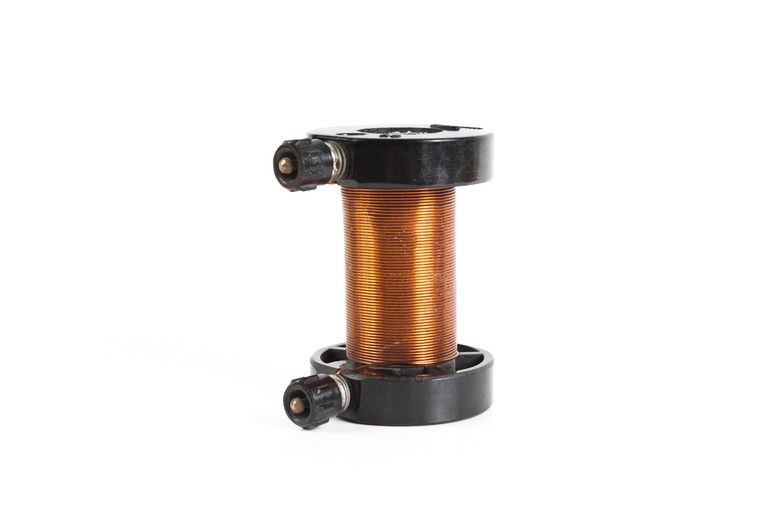How To Make An AC Current Electromagnet
An alternating-current electromagnet gets its power from a standard 120-volt, 60-Hz electric power outlet — not directly, but through a low-voltage transformer. Like a direct-current electromagnet, an AC magnet picks up objects that contain iron. Because alternating current reverses direction 120 times per second, so do the north and south poles of an AC-powered magnet. Although this is an issue for magnet applications that need fixed north and south poles, it works fine for attracting metal objects. You can make your own AC electromagnet in about an hour using easy-to-obtain electrical parts.
Parts You’ll Need
Parts You'll Need
To build an AC electromagnet, you'll need several items from the hardware or electronics hobby store. First, obtain a standard AC line cord with unconnected bare-wire ends. A 12-volt step-down transformer, rated 1 to 5 amps converts 120-volt household current to a safer 12 volts. You will use a roll of electrical tape to cover connections and keep the coil from unraveling. The electromagnet itself is a coil of magnet wire of approximately 28-gauge or similar size, wrapped around an iron bolt or nail about the diameter of a pencil; the wire is available in small spools. For simple trimming and cutting, find a small hobby knife or box cutter. When you're done making the electromagnet, you'll test it with a few small steel staples or tacks.
Making the Magnet
Making the Magnet
Prepare the magnet by wrapping 25 to 50 turns of magnet wire around the iron bolt. Generally, the more turns of wire, the stronger the magnet becomes, although the magnet may reach its maximum strength with a few hundred turns. Leave at least a foot of wire free at each end for connecting to the transformer. Wrap a small piece of electrical tape around the bolt at each end of the coil to hold it in place.
Connecting the Transformer
Connecting the Transformer
Connect the AC line cord to the wires on the step-down transformer labeled "primary." The transformer primary should be rated at 120 volts for standard household use. For safety, wrap the bare wire connections between the line cord and transformer with electrical tape. Do not plug the cord into the wall outlet yet. Scrape about 1/2 inch of varnish insulation from the ends of the magnet wire with a box cutter or hobby knife. Connect the bare magnet wire to the secondary wires of the transformer. Wrap the connections with small pieces of electrical tape.
Testing the Magnet
Testing the Magnet
Double check the electrical connections, particularly those to the transformer primary. Plug the line cord into a standard household outlet. This turns the magnet on. Pick up metal staples or tacks using the ends of the bolt. Unplug the cord from the outlet, and see that the bolt loses its magnetic power. It is magnetized only when the transformer is connected to the AC outlet.
Tips and Warnings
Tips and Warnings
For this project, magnet wire gauge is not critical; avoid a gauge thinner than 30 or thicker than 20. Do not use uninsulated bare metal wire, as this will short out the magnet; magnet wire has a thin layer of protective lacquer insulation. Avoid transformers with primaries rated over 120 volts, as the secondary will put out too low a voltage when connected to a standard U.S. outlet. The magnet wire may heat up after a few minutes of use. If it becomes hot to the touch, unplug the line cord and let the magnet cool down.
References
Cite This Article
MLA
Papiewski, John. "How To Make An AC Current Electromagnet" sciencing.com, https://www.sciencing.com/make-ac-current-electromagnet-6634213/. 24 April 2017.
APA
Papiewski, John. (2017, April 24). How To Make An AC Current Electromagnet. sciencing.com. Retrieved from https://www.sciencing.com/make-ac-current-electromagnet-6634213/
Chicago
Papiewski, John. How To Make An AC Current Electromagnet last modified March 24, 2022. https://www.sciencing.com/make-ac-current-electromagnet-6634213/
